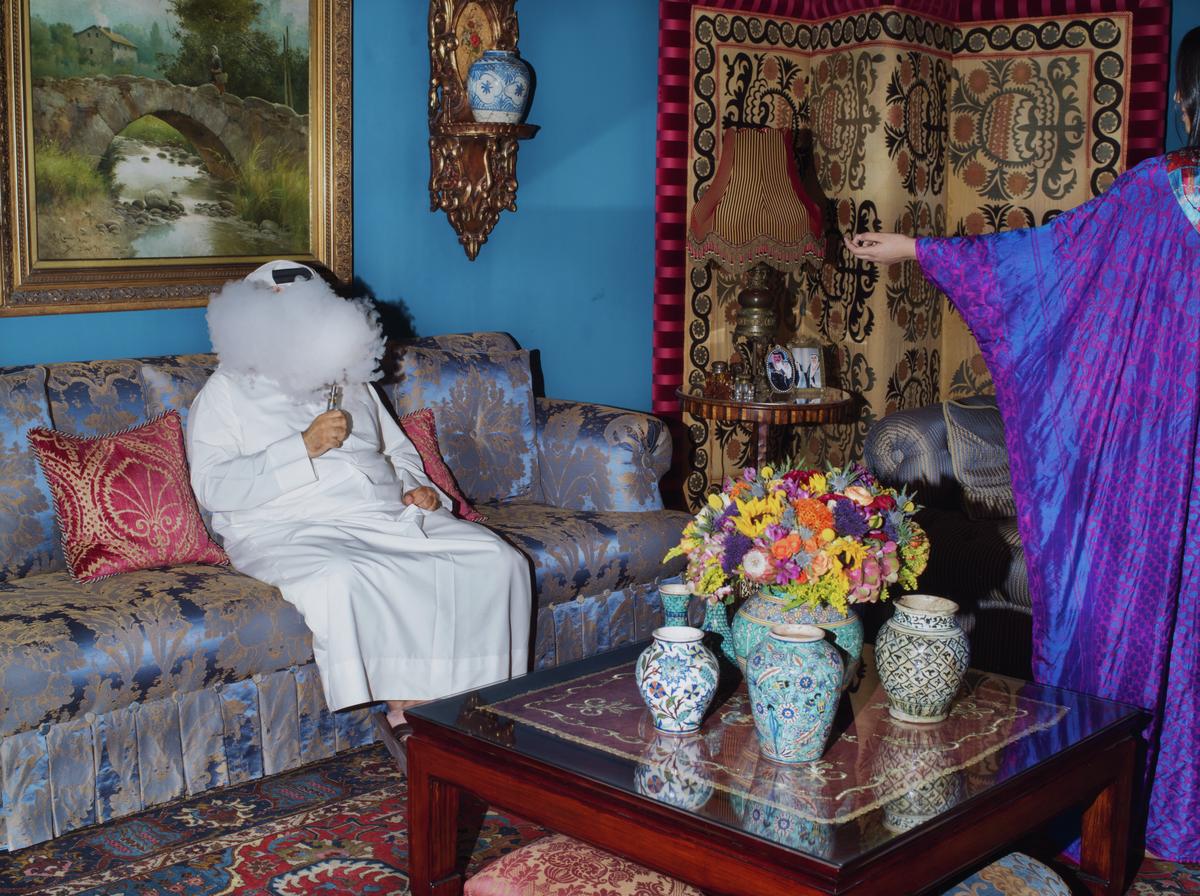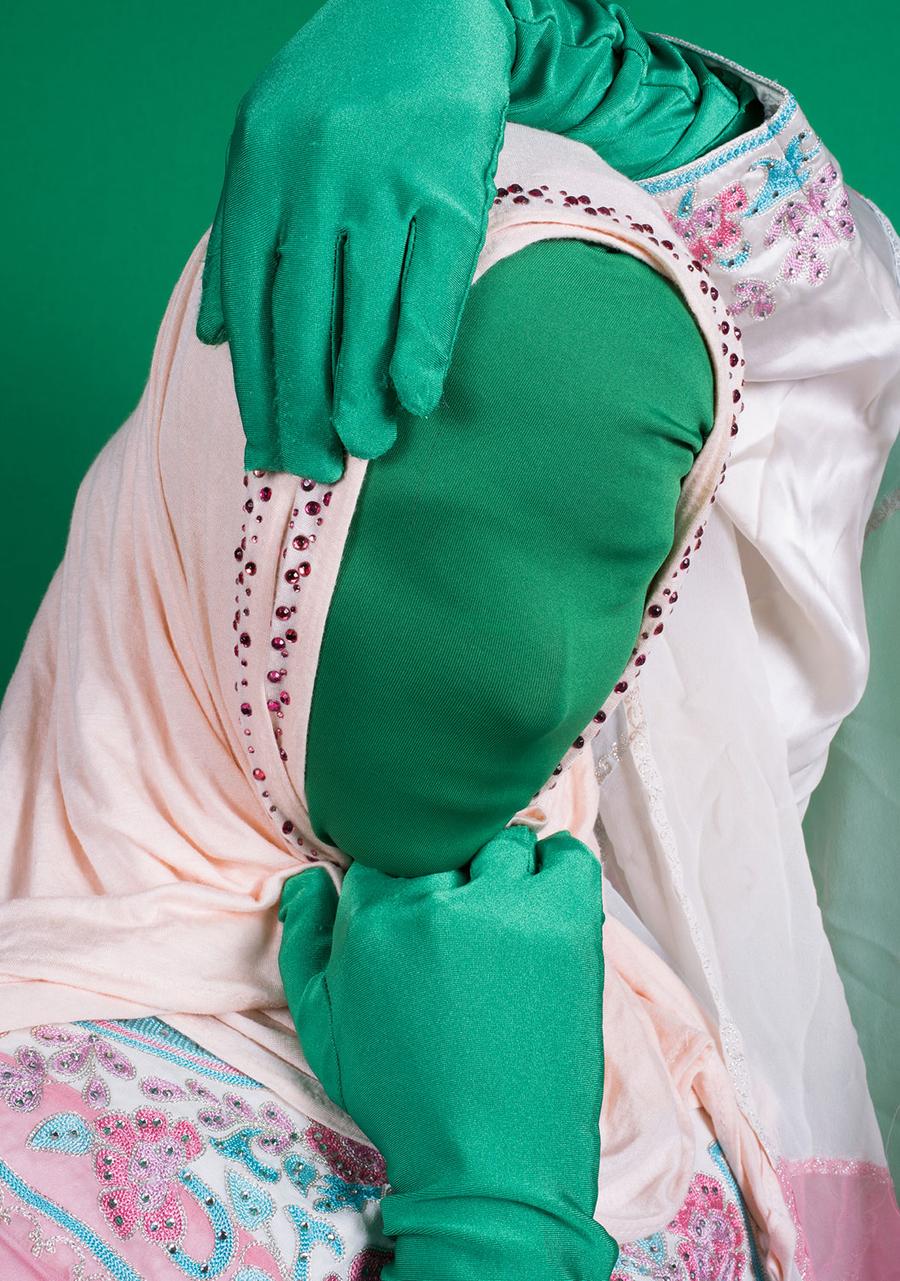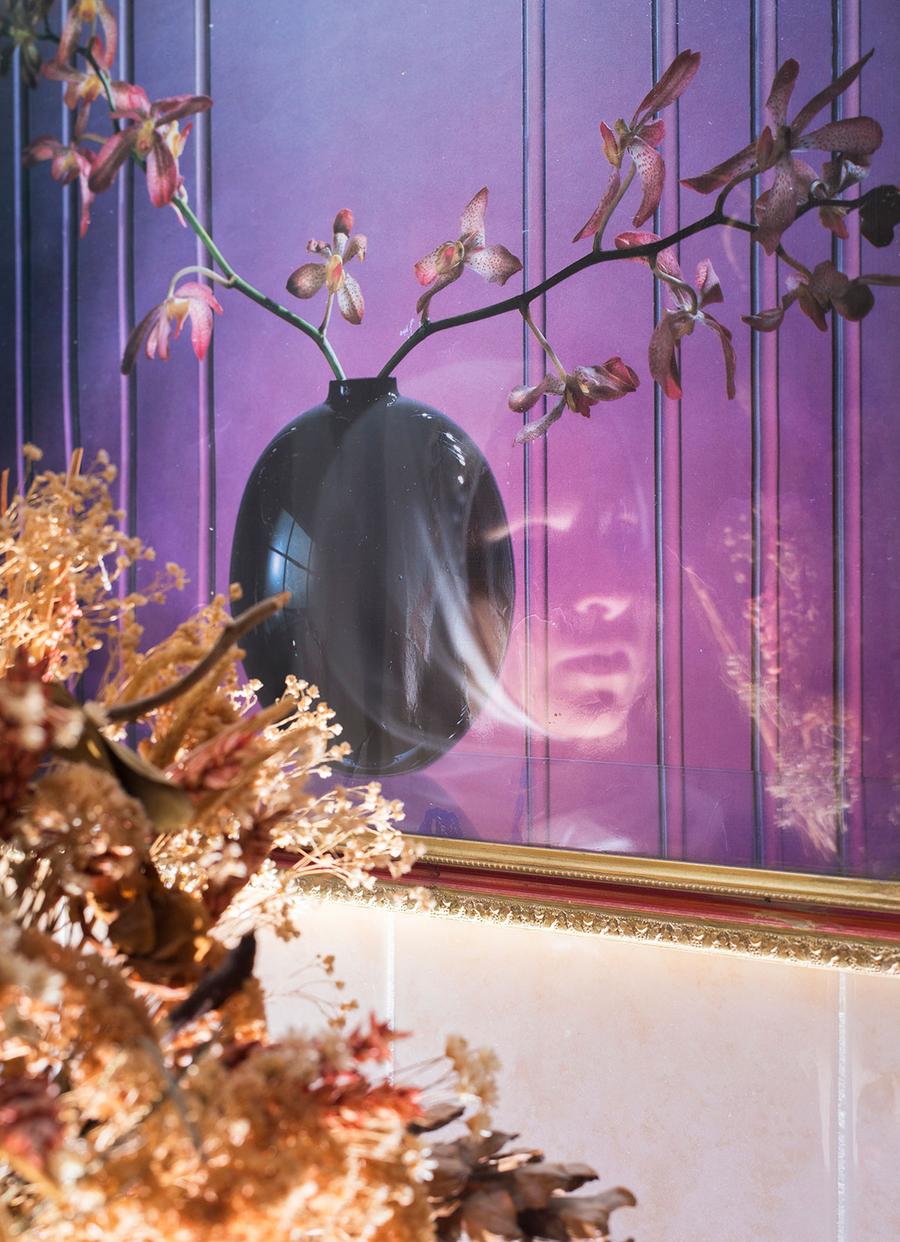Living Room Vape, 2016. All images © Farah Al Qasimi. Courtesy of the artist and The Third Line, Dubai.
The photographer grew up gaming in Abu Dhabi and has drawn on her experiences of virtual worlds and multiple cultures to create her surreal images
“Historically, the thing that almost everyone demands of photography is the truth,” says Farah Al Qasimi. We are reflecting on photography and reality, noting the medium’s age-old burden of (apparently) showing the world as it really is. Even now – particularly now – as the ability to amend, enhance or completely re-render visual realities becomes ever easier to accomplish and understand (if not always embrace or desire), the promise and expectation of faithful photographic representations persists.
This confusion is understandable. The camera, and indeed photography itself, was originally pitched as a neutral recording tool, incapable of interpretation, only representation. But while this may have been a feature, it was not a limitation. Photography has always been open to subversion, and has always embraced it, creating moments that did not quite happen, capturing history in ways that were not directly experienced, and layering time in impossible ways. What does this freedom allow? What are the boundaries that imagination and technology can broach, and what is to be understood in the difference between an accurately photographed moment and an augmented reality?
In her current and recent projects, Al Qasimi uses portraiture and incidental images of the everyday to explore how photography and the visual culture of gaming can create and control identities in virtual realities. The uses and possibilities of photography have evolved, enabling the editing together of landscapes, contexts and communities to create other worlds in which people can thrive, find connection and live in simulated utopias that have yet to arrive. Al Qasimi suggests embracing this flexibility “makes photography especially interesting because we get to play with truth as material”. This insight is a useful reminder in thinking about the malleability of photography and reality, but also the lightheartedness and flexibility with which she has approached some of her projects.
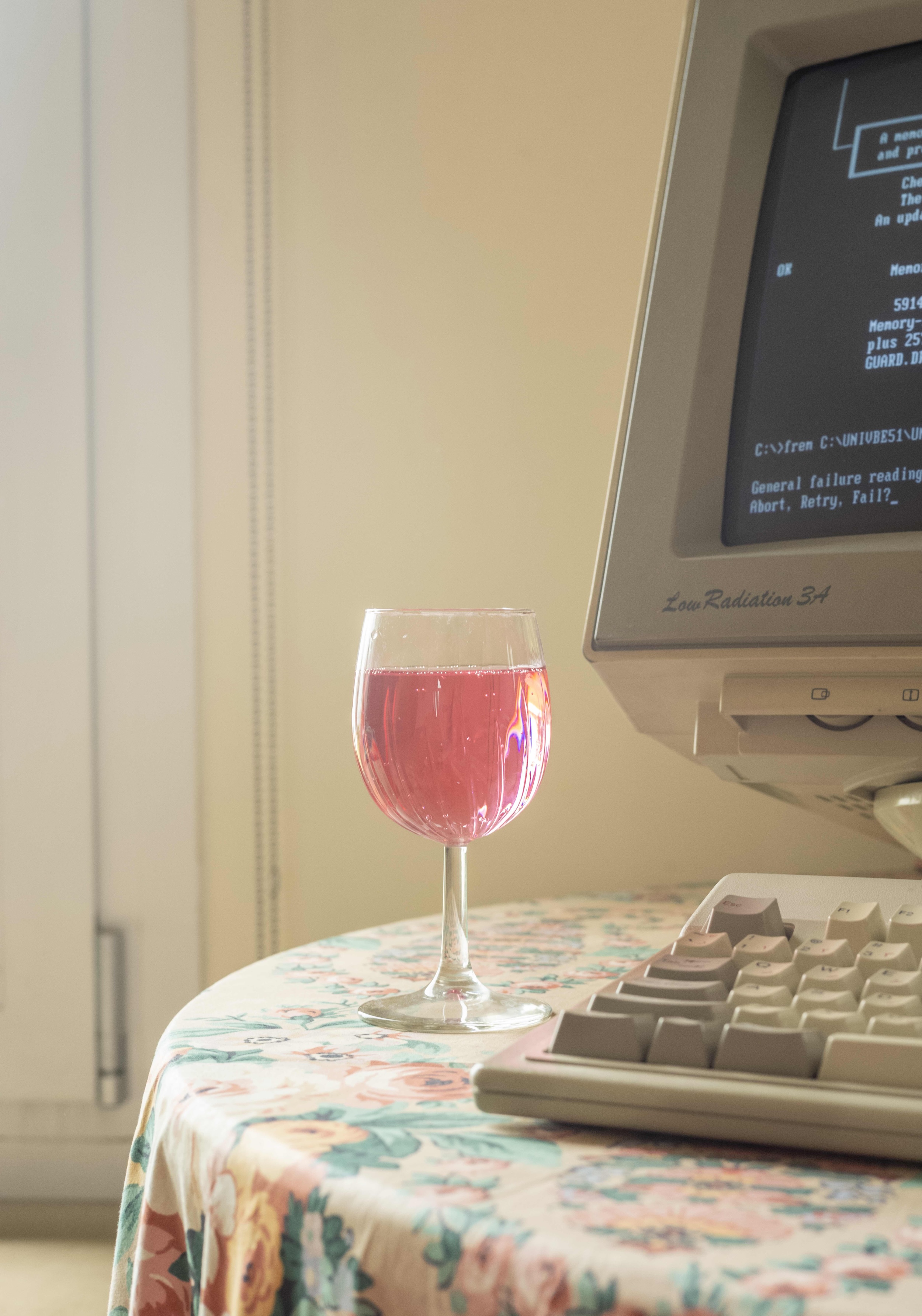
“It’s interesting that there’s a great deal of damage being done to the environment because of these devices that we seem to need… People have a fetishistic obsession with new technology.”

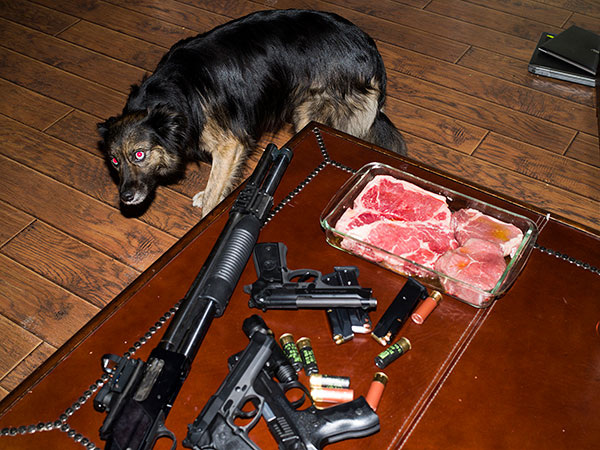
“This idea of virtual reality being less solid or material or less believable than actual reality as an embodied experience is getting more blurry, as we have a deepened relationship to artificial intelligence and as we become more connected to our devices,” Al Qasimi adds. There are elements to be explored around the physical connections we have – thumb to phone, or finger to shutter release, fingertips to keyboards – alongside the emotional connections they enable, augment or replace. The physicality of in-person connections can now be replaced with the tactility of interfaces, screens and equipment.
The virtual realities Al Qasimi speaks of and works within can easily allow a ghostly, disembodied perspective – peering over shoulders, studying computer screens, poring over physical tokens related to online lives – that otherwise would have remained in the private landscapes of our minds. We briefly talk about the lockdowns during the Covid pandemic, and the abrupt reminder that great swathes of the global population lack access to natural, outdoor spaces. Against this backdrop of fear, death and loss of connection, some of Al Qasimi’s friends turned to gaming, namely Animal Crossing, as an analogue for proximity to nature. In this game of growing food and making friends, a virtual utopia lifted the players out of reality, offering temporary relief from the everyday.
We also discuss how resources have been mined from physical landscapes to make these virtual landscapes a reality; a disturbing relationship between the quest for connection and nurturing digital nature held up against the inevitable destruction and severing of actual nature and environments it requires. It is a reminder that virtual realities have very real impacts on the natural world. “It’s this full circle, capitalistic dream,” says Al Qasimi. “Ultimately what we want has always stayed the same and that’s a relationship to the land where we feel that there’s a symbiosis and that we can nurture a part of it that will in turn nurture us. It’s interesting that there’s a great deal of damage being done to the environment because of these devices that we seem to need… People have a fetishistic obsession with new technology and the materiality of it.”
“People see gamers as lonely… but the computer became a place where I went to meet people.”
The title of Al Qasimi’s most recent project, Abort, Retry, Fail, references the error message displayed by her family’s faltering computer when it attempts and fails to connect with the outside world. For years, the computer was a beacon signalling outward, but now it sits on the dining room table as a failed portal to other realities. Al Qasimi grew up playing on gaming consoles, projecting beyond her immediate reality and encountering landscapes radically distinct in register to her daily life in Abu Dhabi. The colour palettes and motifs she encountered were far removed from her own sense of place, while pirates, plumbers and gorillas were regular companions when venturing into Pirates of the Caribbean, Super Mario, Donkey Kong and other virtual spaces.
Picked out in vibrant, primary colours, the ability to pause, save or start again also presented an otherwise unachievable level of control and, while being able to practise the correct sequence of actions over and over is enviable, it further emphasised the teleportation into a non-reality. This back and forth between escape and control presented itself further because Al Qasimi always chose the characters who most closely resembled her, controlling her self-image and adopting a version of herself in a context she could only temporarily and digitally inhabit. I ask about video games that did share an aesthetic from her early years, but this list turns out to be very short. Al Qasimi mentions Desert Strike as one example, noting that games of this nature often have not-so-subtle tones of western war propaganda. The sense of utopia is pushed further out of reach when you resemble “the bad guys”.
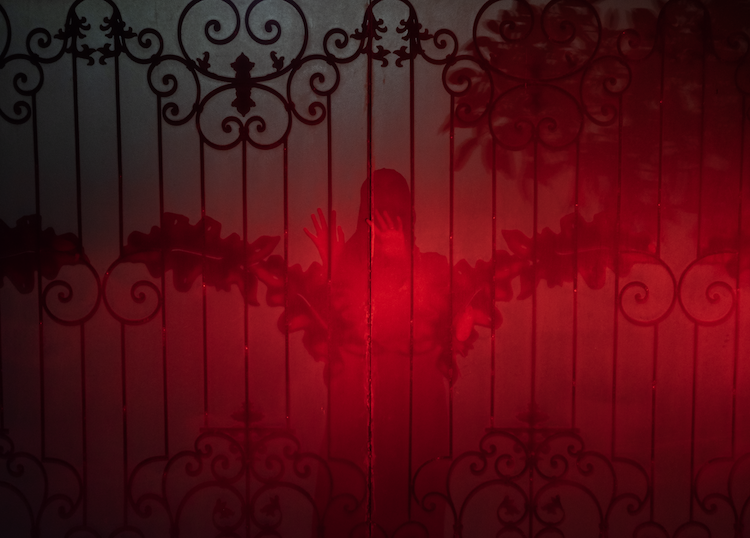
“There is a level of control that people seek when they’re gaming that often does not reveal itself in our daily lives. There is a sense that you can find utopia in these worlds that you build.”
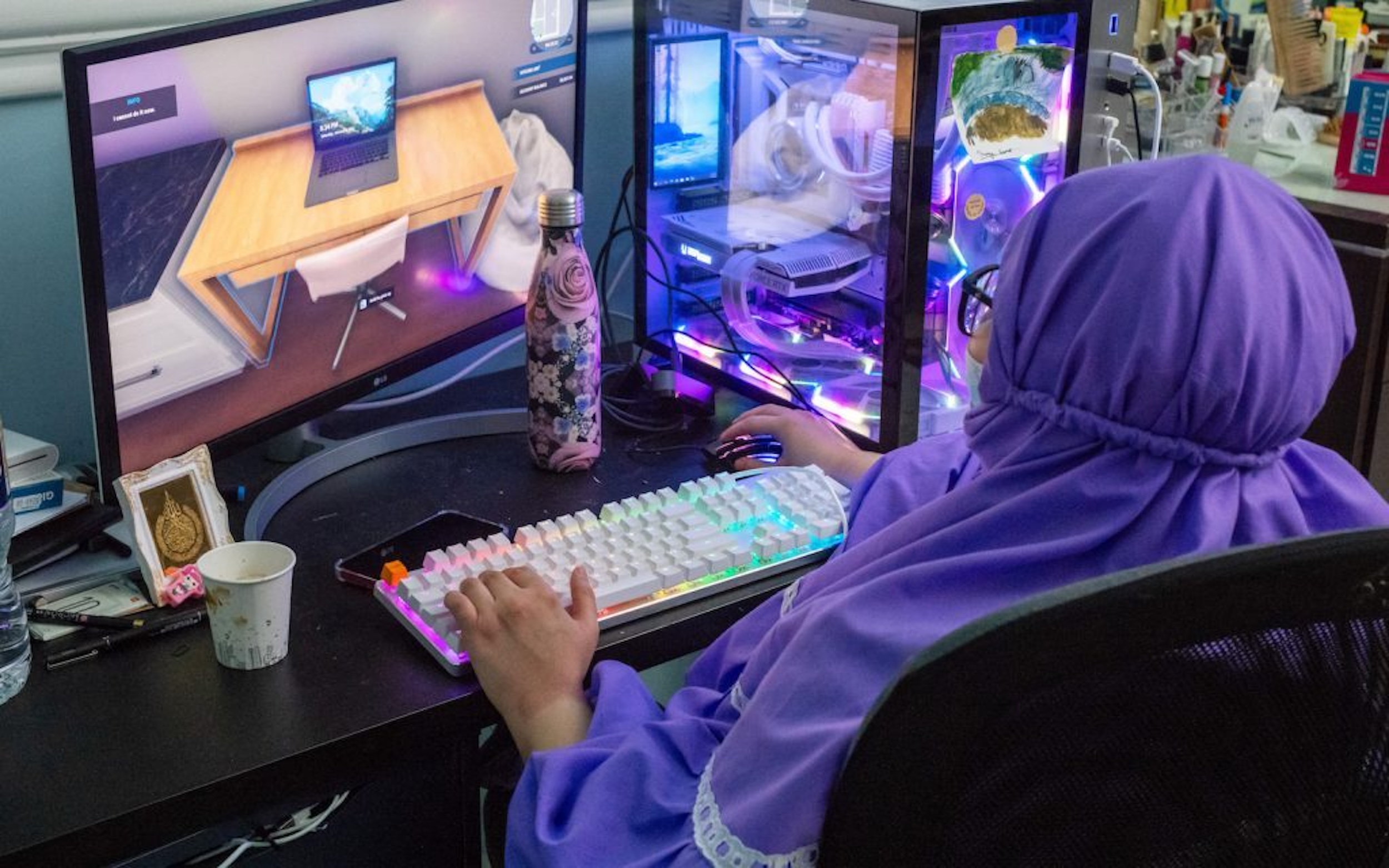
Even so, for Al Qasimi gaming was a tool to find connection and form relationships, enabling friendships and encounters beyond distance or circumstance. It is a reminder of the early online chat rooms, where a standard opening was to ask the age, sex and location of your fellow conversationalists, then marvel at the range of responses over the course of a 5 day. “People see gamers as lonely… but the computer became a place where I went to meet people,” says Al Qasimi.
Abort, Retry, Fail brings together photographs and moving images to deliver tales of other worlds in bright, relentless tones. Again, the colour palettes suggest a sideways step out of reality. Portraits of gamers are balanced against images of small details, moments that add to the familiar yet off-kilter vibe. Faces tilt back, lit by the glow of computers and displays, while background clues hint at the range of cities represented. Al Qasimi positions these gamers as “living in some sense of digital or virtual reality where their attention is being held by a world beyond a screen that we as viewers can’t access. There is a level of control that people seek when they’re gaming that often does not reveal itself in our daily lives. There is a sense that you can find utopia in these worlds that you build.”
Al Qasimi has also created a short film in the style of a video game cut scene (a segment in a game that presents information and introduces players to quests). Her imagined scene presents the challenge of finding a source of water in an apocalyptic landscape. In the photographic work, meanwhile, the audience takes on Al Qasimi’s perspective, standing at gamers’ shoulders as they immerse themselves elsewhere.
In Anood Playing House Flipper we see Anood seated at her glowing gaming PC, which is lit up like a terrarium of bright, snaking LCDs. One hand rests on a keyboard, while her monitor shows an image of a laptop on a desk. The image unfolding outwards of computer on computer is like a digital glitch showing us what we have already seen, or like the ghostly pattern left when dragging a window across an old, slow-to-respond screen.
In Pink Soda, a wine glass sits in the centre of the frame. The glass reflects a pink pearlescent tone, leading the eye to the machine at the heart of the project. The text “General failure reading. Abort, Retry, Fail?_” can be seen on the family computer. It sits on a faded floral tablecloth as it fails to reach out beyond this domestic space. The possibilities once contained within the chunky box, angled upwards in a similar pose to the portraits, have shrunk down to this repeated, impassable question. But there is a persistent hopefulness in this ever-blinking phrase, as well as in Al Qasimi’s repeated decision to retry the command as it declines access to the brightly coloured video-game lands.
The relationship of control and reality is less overt in Al Qasimi’s earlier projects, but here too she plays with inserting alternative perspectives into narratives. In 2020’s Back and Forth Disco, she captures portraits, fragments of people, and in-between moments, presenting them as larger-than-life installations on bus stops throughout New York City. Again, her work offers viewers the ability to step through the photographs into other temporary places, in which experiences, instances and realities are presented from different angles. Pedestrians are photographed from behind, arms pointing into frame, mirrors endlessly reflected in mirrors, out-of-place chandeliers and hidden faces.
When thinking about portraiture, Al Qasimi tries to “remain as close to the truth as possible”, adding, “When I’m out in the world, I’m just witnessing what’s already happening.” Recording and taking a neutral position, she frames the portraits as questioning the contexts in which they find themselves, rather than confirming answers.
List Projects (2019) also explores this theme, masking portraits and leaving them open to interpretation. Al Qasimi compiles fragments from the two sites informing her identity – Abu Dhabi and the US – to create a third space which confuses, borrows, controls and provokes how we think about the creation of identity and reality. In one image, colour, texture and pattern fill the frame. The patterns of the walls, floors, furniture, sitters and decorations jostle for attention. A standing figure, half in view, points, leading the gaze through the calamity of colours to a seated individual. Another obscured face, this time from a puff of vapour, blots out their expression. A similar cloud-like shape hovers in the painting hung above this individual’s head. Al Qasimi’s series is both dislocating and bridging in its clever combination of cultures and cities, but it maintains a playful lightness throughout.
Thinking about the ability to choose characters, designing cut scenes or playing in worlds that reach through to others so easily, inhabiting different contexts and backdrops so deftly, I ask Al Qasimi about the role of code switching in these spaces. We talk about the restlessness of moving between countries and continents, about how this abrupt landing can impact in ways that continue to ripple, sometimes almost imperceptibly so. The camouflage and concealment that come with snapping into different versions of oneself can be unsettling.
Al Qasimi says she recognises this feeling of restlessness, and actively tries to impart it in her projects, describing it as a driving force for resolution and self-discovery. She does not feel she belongs in either Abu Dhabi or the US, she says, but embraces this unsettled state. “[It] allows me to be an insider and an outsider at the same time”, she points out, and being both inside and outside the frame has given her a perspective on reality and photography, setting and resetting boundaries of reality, with a fluidity that runs through her practice and interior world. As Al Qasimi concludes: “There is something to be said for being the product of difference.”
Farah Al Qasimi has an artist room on show at Tate Modern, London, until November 2024. tate.org.uk

